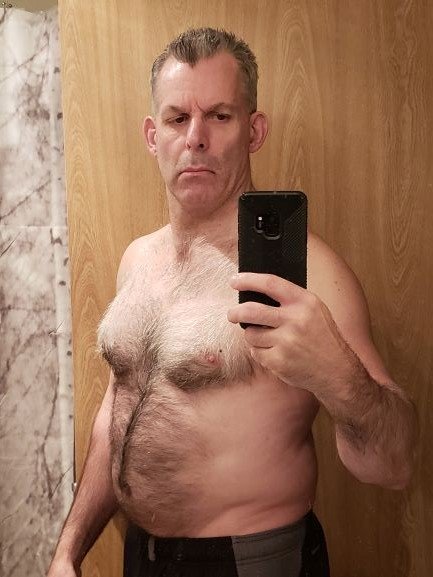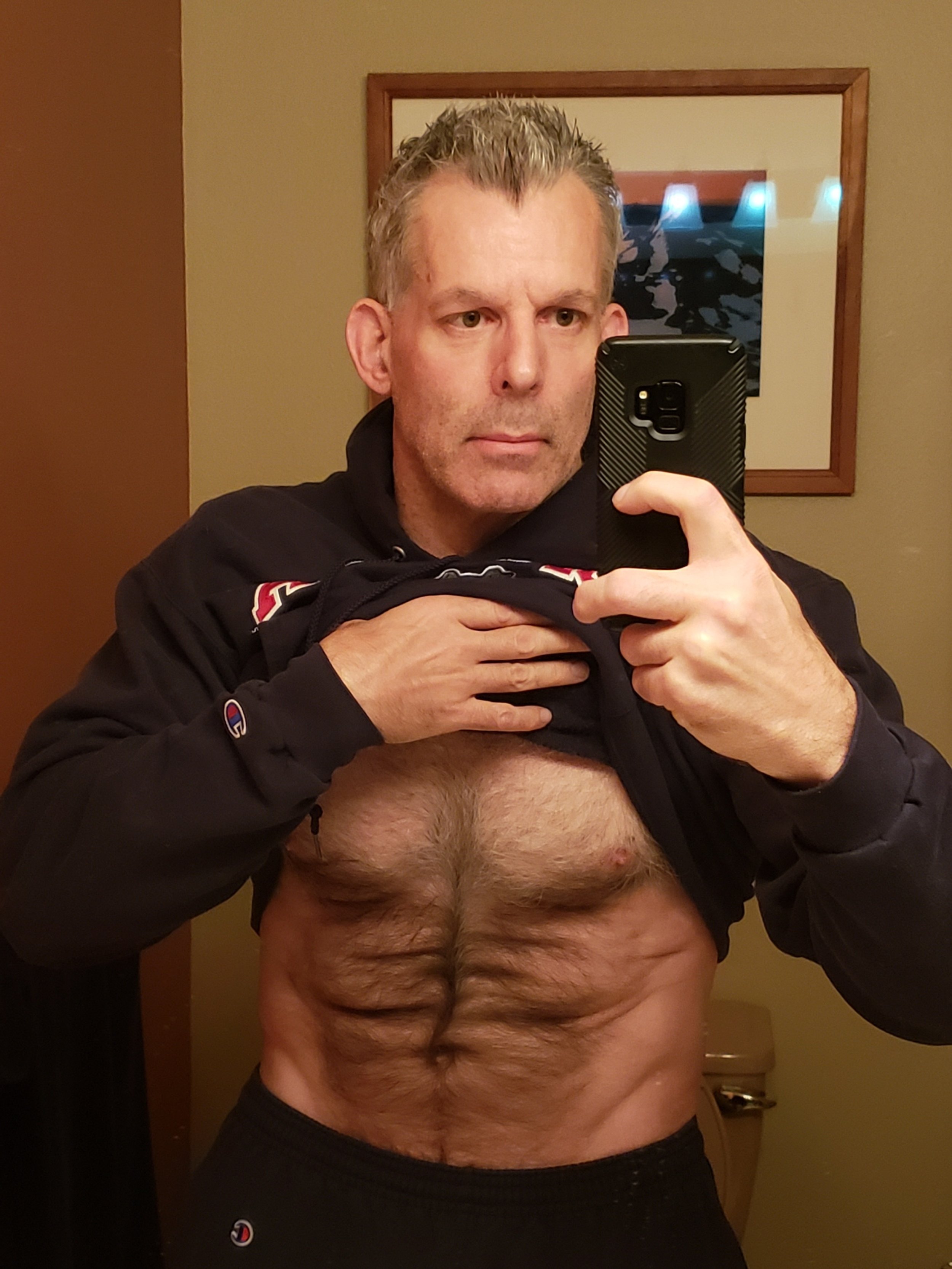Hi. I'm Randy M. Herring. I consider myself a regular guy in good athletic shape for my age—62. I’m a three-time testicular cancer survivor, author of The Fitness Mindset: 7 Habits for Peak Performance and Reflections on Growth: An Existential Journey, with nearly 50 years of bodybuilding and fitness training, and over 25 years of experience as a wellness coach. I empower individuals to transform their bodies with results-driven training and encourage deepening self-awareness to cultivate a more authentic life.
I have an academic background in exercise science, received my bachelor's in religious studies, and hold a master’s in philosophy. I have taught at local colleges and universities.
I’m on social media to share my story—pushing through health and mental challenges and staying committed to fitness, one day at a time. My goal is simple: To inspire others to keep moving forward in their own fitness journey, no matter what life throws their way.
Randy Herring’s Story
In December 1977, at 15 years old, I weighed 115 pounds. I was too intimated to join my local gym, so I trained at home with a barbell and dumbbell set. I lifted weights every day three times a day to get strong and build muscle. But that was a mistake. After 6 months, I only put on 10 pounds. At 125 pounds, I was still thin for two reasons. One, I didn’t eat enough. And two, I exercised too often. Read my detailed story here: Gaining Weight With A ‘Fast’ Metabolism.
In June 1978, I invested in a weight gain diet mail order from Universal Bodybuilding. I worked as a dishwasher for a local restaurant. I ate burgers and fries or French dip sandwiches and cherry pie during my breaks. I followed this weight gain diet for 8 months. I ate six frequent meals every day that were evenly spaced out about 3 hours. My first meal was at 6AM and my last meal was at 9PM. I ate meat and cheese, gorged on desserts, drank lots of milk, ate a lot of bread, and consumed nightly protein drinks.
From Thin to Muscular
In the first 8 months, I gained 55 pounds by bulking up to 180 pounds. My waistline ballooned from 27 to 36 inches. I felt confident about myself because I transformed the skinny kid that I once was into a more confident and stronger kid.
To lose the fat I gained, I saw a training mail order program in Muscle Builder Magazine. The mail order program featured a picture of a bodybuilder’s inspiring powerful-looking physique whom I was unfamiliar. It was Arnold Schwarzenegger. I invested in Arnold's diet and training program to lean out. In 4 months, I lost 25 pounds.
In my first serious year of training and investing in two training and nutrition plans, I gained 30 pounds of lean muscle training at home. In June 1979, at 16 years old, I weighed a solid 155 pounds. I was stronger, more confident and had a better physique. I joined a local athletic club within a few weeks.
From Fat to Fit
More than four decades later, between the ages of 56 and 57—from January 2019 to March 2020—I experienced a second major transformation. I went from 200 pounds to 175 pounds in just 15 months. In the first 16 weeks alone, I lost 17 pounds, eventually shedding a total of 25 pounds over the course of a year.
Midway through this transformation, in July 2019, I faced a second recurrence of testicular cancer, which resulted in the removal of my right—and only remaining—testicle. That event marked the beginning of Testosterone Replacement Therapy (TRT), monitored by my physician.
Despite my testosterone level being just 172—far below the clinical norm—my transformation was entirely natural. No caffeine, no supplements, no muscle enhancers. And just to be clear: I’ve never used performance-enhancing drugs.
From Fit to Cancer
In November 2021, just a year and a half after my second transformation—and only six months after publishing The Fitness Mindset—I was hit with a third recurrence of testicular cancer. Over the next ten weeks, from November 15, 2021, to January 21, 2022, I underwent an intense chemotherapy regimen (Etoposide 204mg and Cisplatin 40.8mg), totaling 40 bags. Despite the physical toll, I stayed committed to my fitness routine and continued to exercise throughout treatment.
Overcome setbacks and obstacles!
On December 7, 2021, just 23 days into chemotherapy, shortly after losing my hair and completing a grueling 6-hour treatment session, I put my strength to the test—deadlifting 315 pounds for two sets of 10 reps!
From TRT to no TRT
The side effects of chemotherapy significantly altered my body chemistry, physical health, and appearance. Due to my lack of testicles and a history of elevated prostate levels along with blood clots, my doctor discontinued my TRT for four months from mid-January 2022 to mid-May 2022. This decision was based on a common belief among oncologists that intramuscular testosterone injections can “fuel prostate cancer,” potentially enlarging the prostate and increasing PSA levels. However, this claim has been debunked and shown to be false. Read my full fitness article: PEDS: A Detailed Dilemma.
Since I no longer have testicles, my body is unable to produce testosterone naturally. And because my primary care physician advised against TRT, my body was left to function solely on estrogen—the only hormone it could still produce on its own.
In March 2022, about 60 days post-chemotherapy recovery, I hiked to the top of Mt. Sentinel in Missoula, Montana—without TRT! The hike took me over an hour longer to complete, but I did it!
From mid-September 2022 to mid-July 2023 my doctor discontinued my TRT again—this time for 10 months—because of an elevated prostate. In June 2023, I ran my first half marathon in Missoula, and again, without TRT!
Can a man live with low testosterone? Absolutely.
Can he work out? Without a doubt.
Can he make physical progress? Yes, he can.
Now, does any man want to live with less-than-optimal testosterone? Of course not. But here’s the truth—I’m living proof that it’s possible.
I went without TRT for 14 months on two separate occasions (mid-January 2022 to mid-May 2022 and mid-September 2022 to mid-July 2023) and still made solid physical progress. It wasn’t easy, but it was real.
A Deep Dive into the interplay Between Fitness, Mindset, and Resilience
In an October 2023 compelling episode of the Mindset Forge Podcast, host Barton Bryan speaks with author, athlete, and three-time testicular cancer survivor Randy Herring. This in-depth conversation explores how the integration of physical fitness and mental discipline helped Herring navigate the medical and personal challenges he faced throughout his journey.
Herring’s path began at age 15, when he entered the world of fitness. Over time, training became more than a physical pursuit—it evolved into a foundation for personal growth and self-understanding. He emphasizes the importance of training with intention: focusing on proper technique, understanding one’s capabilities, and adapting routines to individual needs. Herring warns against the dangers of mimicking professional bodybuilders without adequate knowledge, highlighting the need for a flexible and sustainable approach to exercise.
The conversation also addresses the clinical realities of Herring’s experience. He speaks candidly about testosterone replacement therapy (TRT), post-divorce weight gain, and how he adapted his training during the COVID-19 pandemic—relying on resistance tubes and wall-sits for at-home workouts. Remarkably, during the lockdown, he became stronger, more muscular, and more defined. As a personal statement, he even chose not to cut his hair in protest of the lockdown.
As part of his recovery, Herring confronted both the physical effects of chemotherapy and the psychological impacts of long-term medication use. Notably, he shares his personal decision to stop taking Gabapentin and Venlafaxine, medications prescribed for nerve pain and hot flashes, respectively. He explains that while these medications served specific purposes—Gabapentin for chemotherapy-related nerve pain and Venlafaxine for hot flashes following a temporary pause in TRT—they also had cognitive side effects that influenced his decision. Herring underscores that this experience is unique to him and urges others to consult medical professionals before altering any prescribed treatments.
He further discusses the implications of TRT for someone who no longer produces natural testosterone. While synthetic testosterone is classified as a steroid, Herring notes that in his case, its use is medically supervised and intended to maintain physiological hormone levels rather than enhance athletic performance. He also reflects on the physiological role of testosterone in motivation, recovery, and muscle development.
Throughout the episode, Herring’s story offers insights into the complexities of maintaining physical health, mental clarity, and emotional resilience in the face of significant health challenges. His experience reinforces the value of discipline, adaptability, and a proactive approach to personal well-being. Tap the image below!
Diagnosis, Treatment, and Recovery of Testicular Cancer For the Third Time
In a December 2024 extraordinary episode of It Takes Balls, host Steven Crocker speaks with Randy Herring, a three-time testicular cancer survivor from Washington, about his experiences with diagnosis, treatment, and recovery.
Randy recounts his initial diagnosis in 2009 following the discovery of a physical change, as well as two subsequent recurrences in 2019 and 2021. Throughout the episode, he discusses the medical challenges he faced, including surgeries and chemotherapy, and the adjustments required for life after treatment.
The conversation highlights Randy’s continued commitment to fitness, even during active cancer treatment, and his adaptation to living without testosterone. He addresses the physical and psychological impacts of his experience, emphasizing the value of early detection and the role self-awareness plays in improving outcomes.
Randy also shares his work as a cancer awareness advocate and author of The Fitness Mindset, a book focused on promoting health and resilience. As a fitness professional and parent, he reflects on how his journey with cancer influenced his perspective on wellness and personal strength. He offers practical insights for individuals navigating a diagnosis, underscoring the benefits of proactive health management and a focused mindset. Tap the image below!














